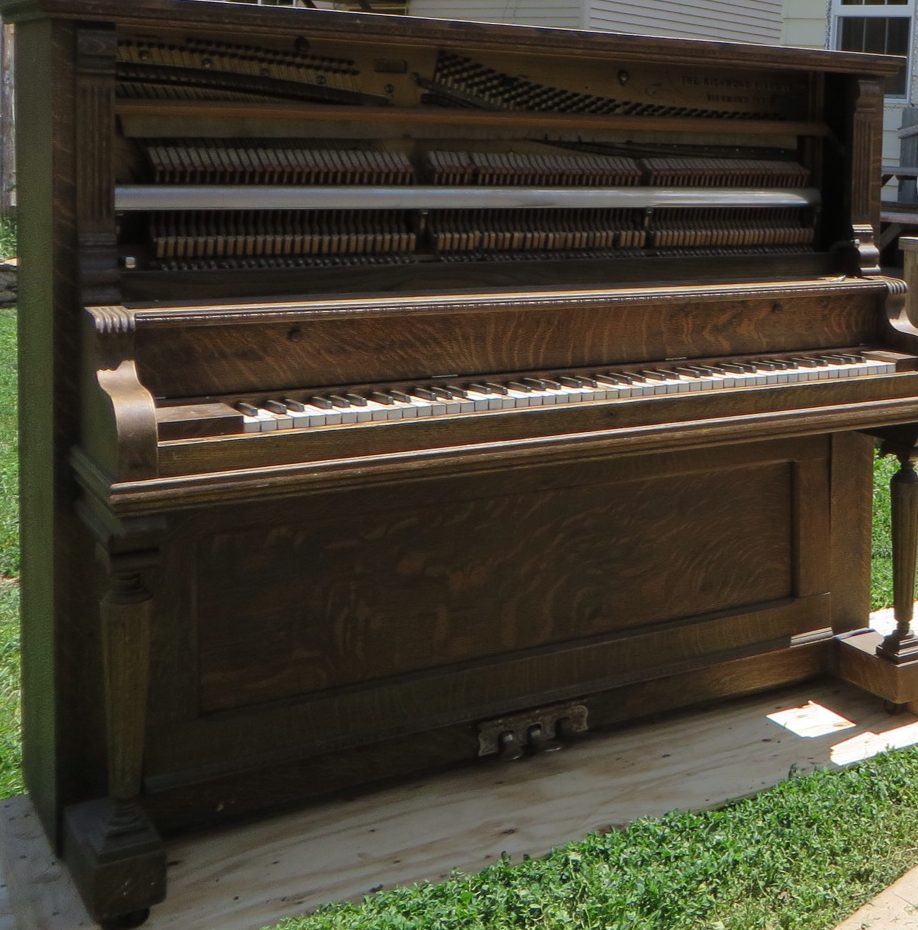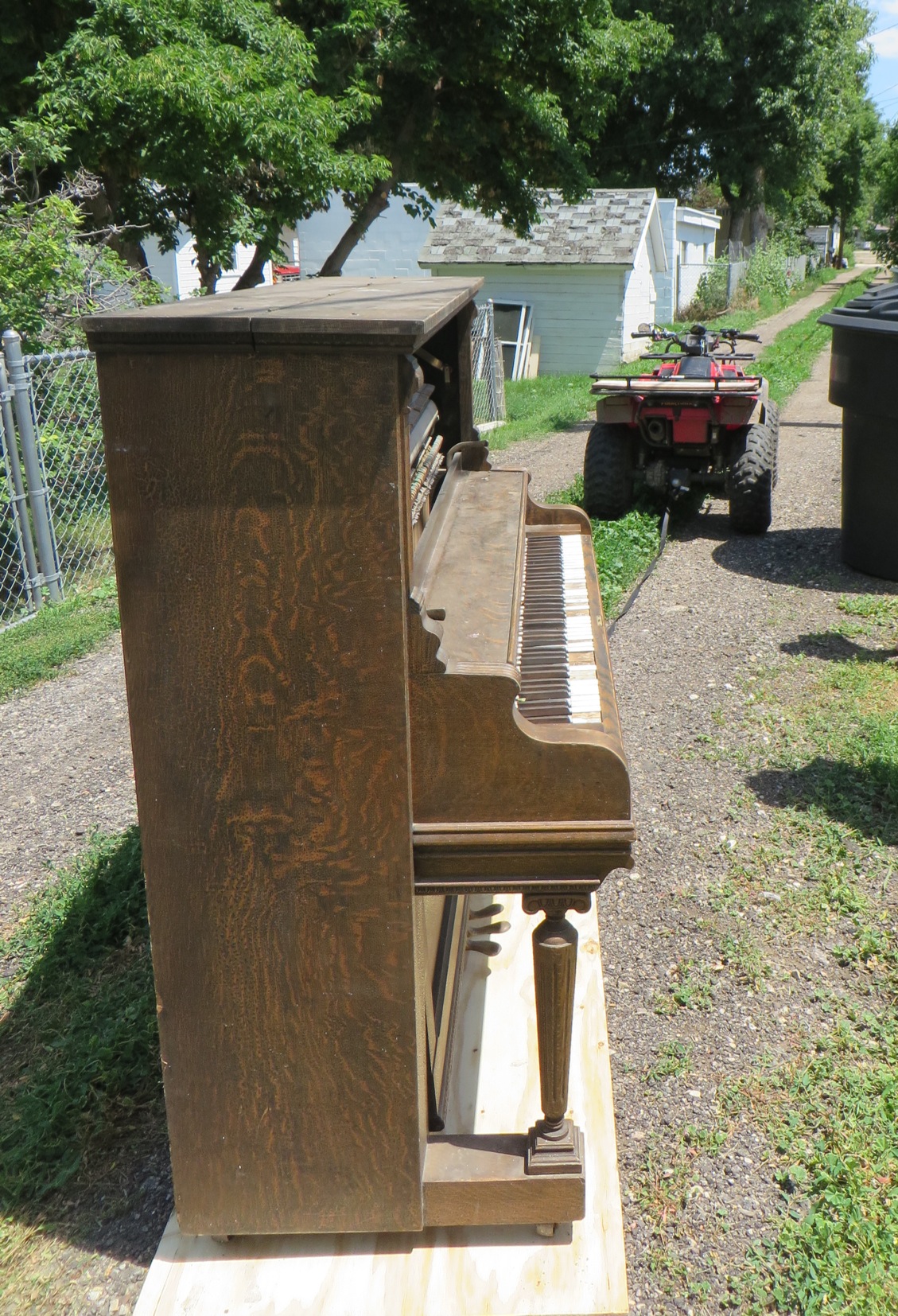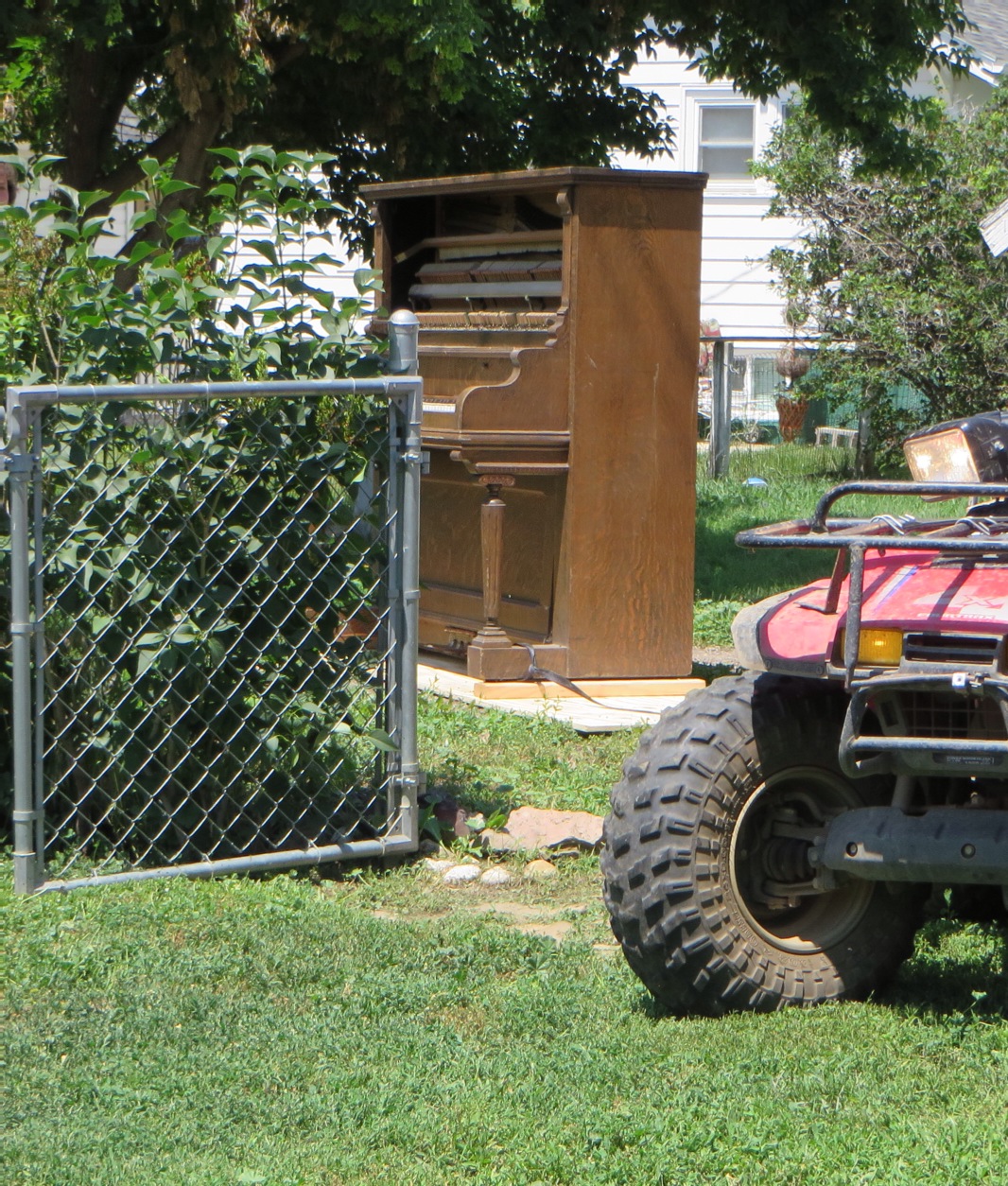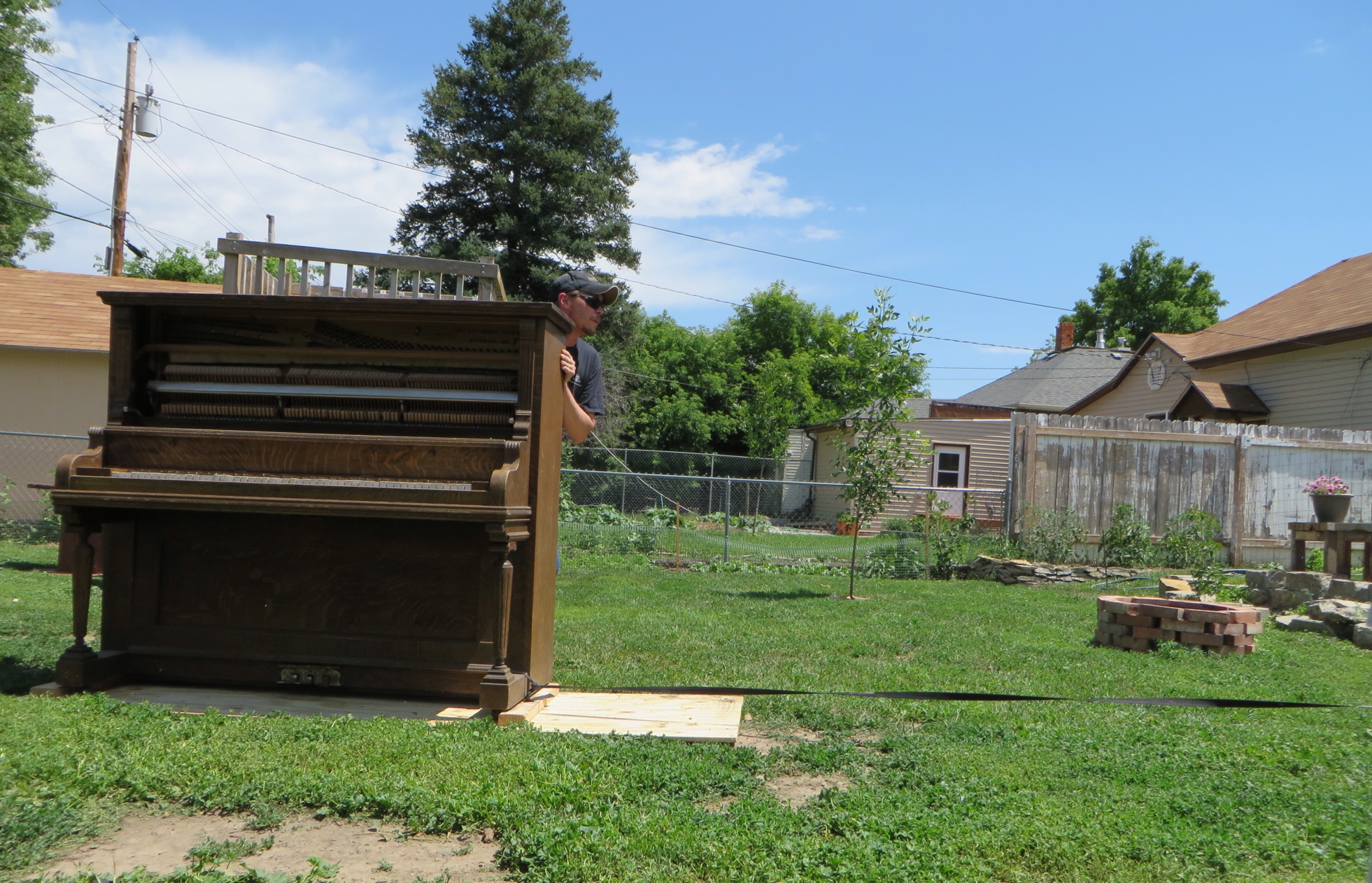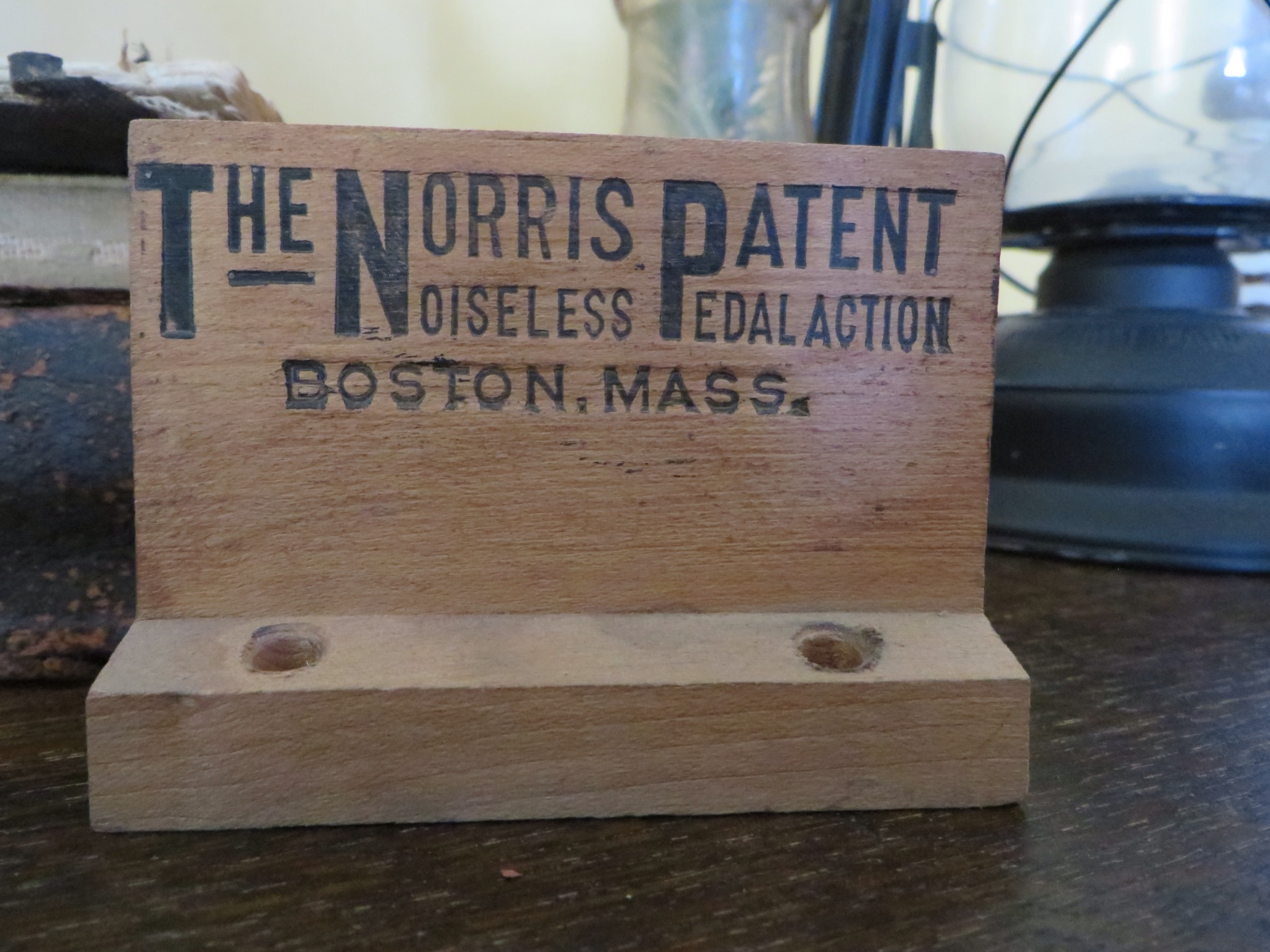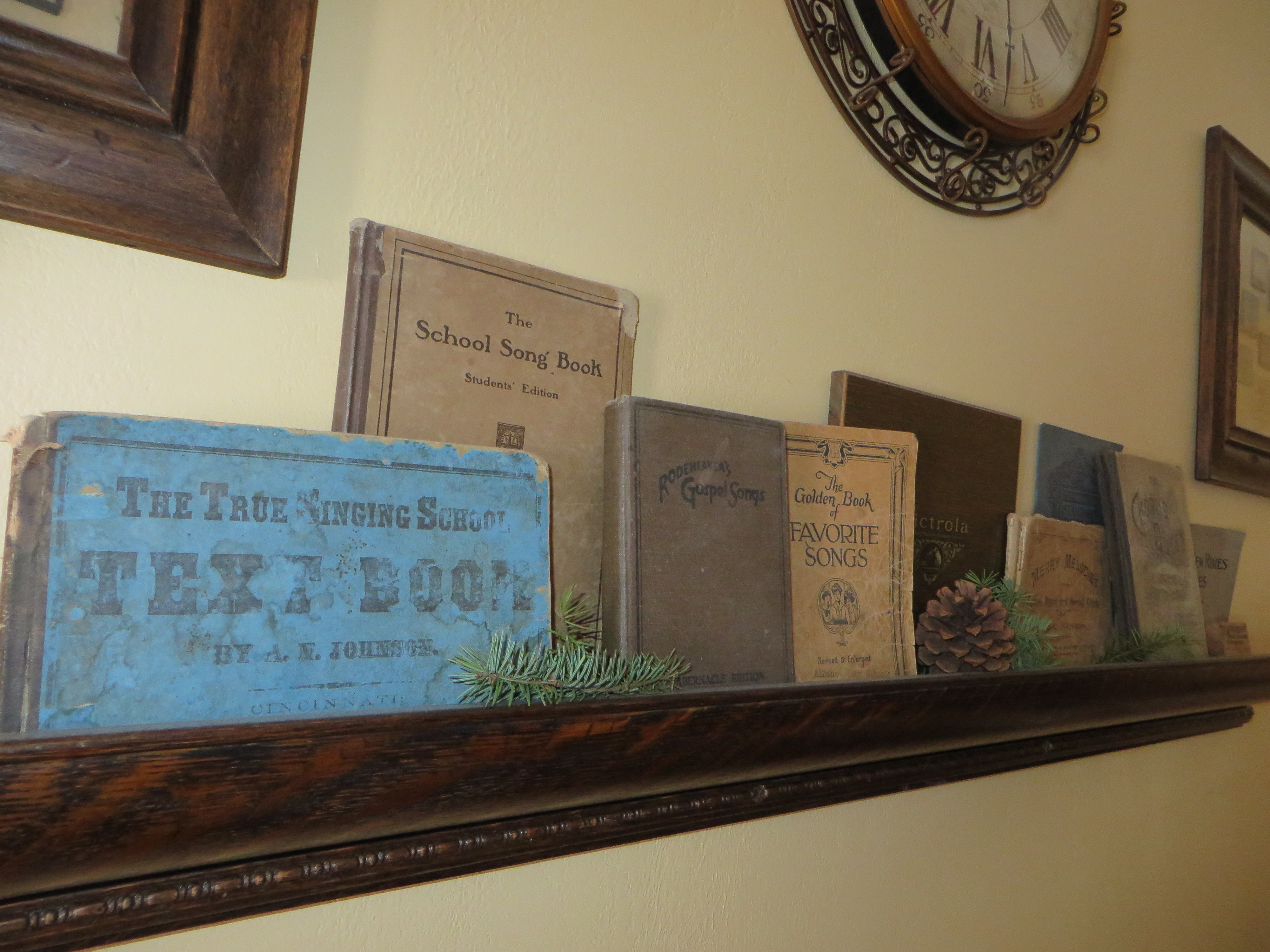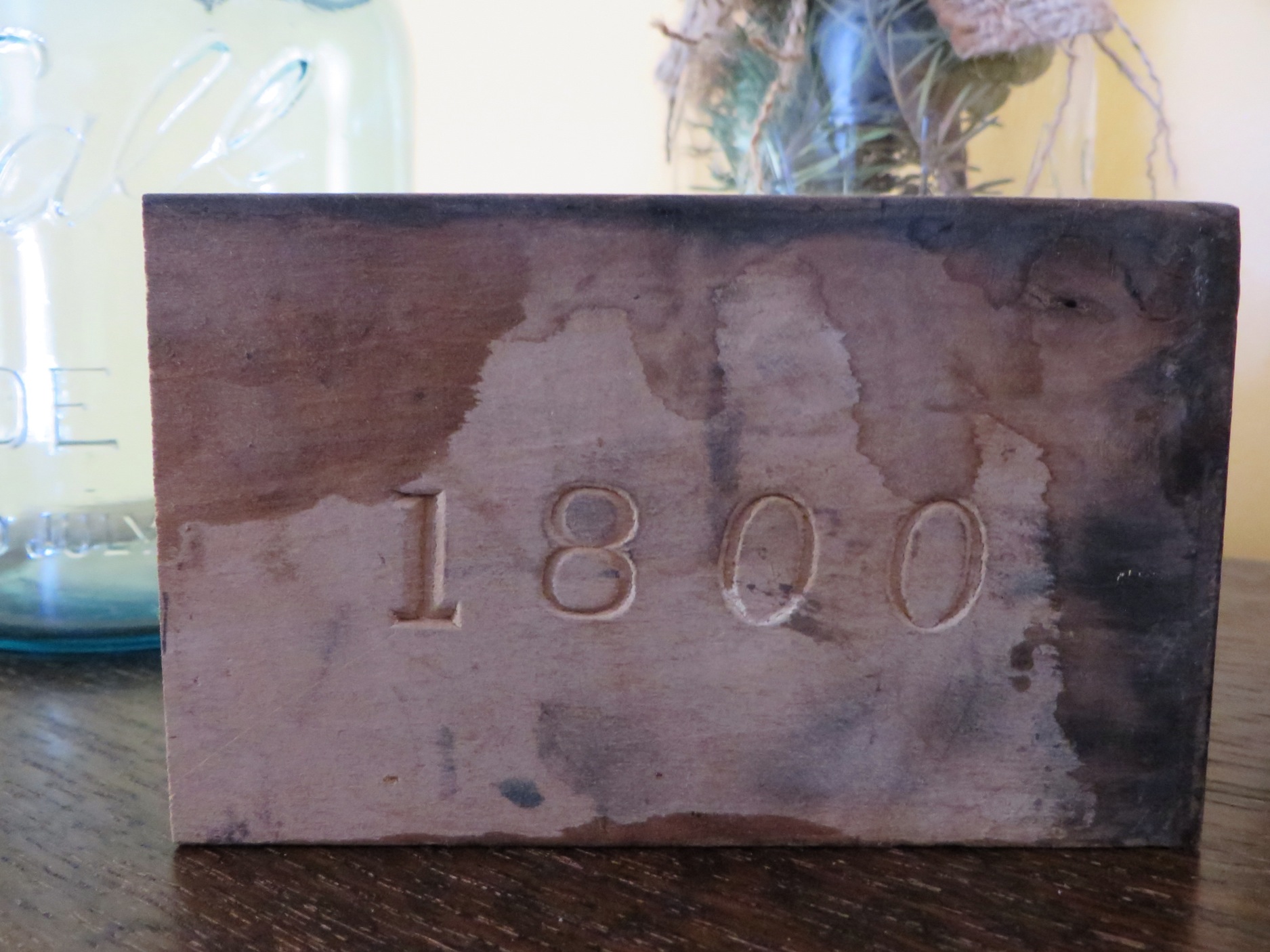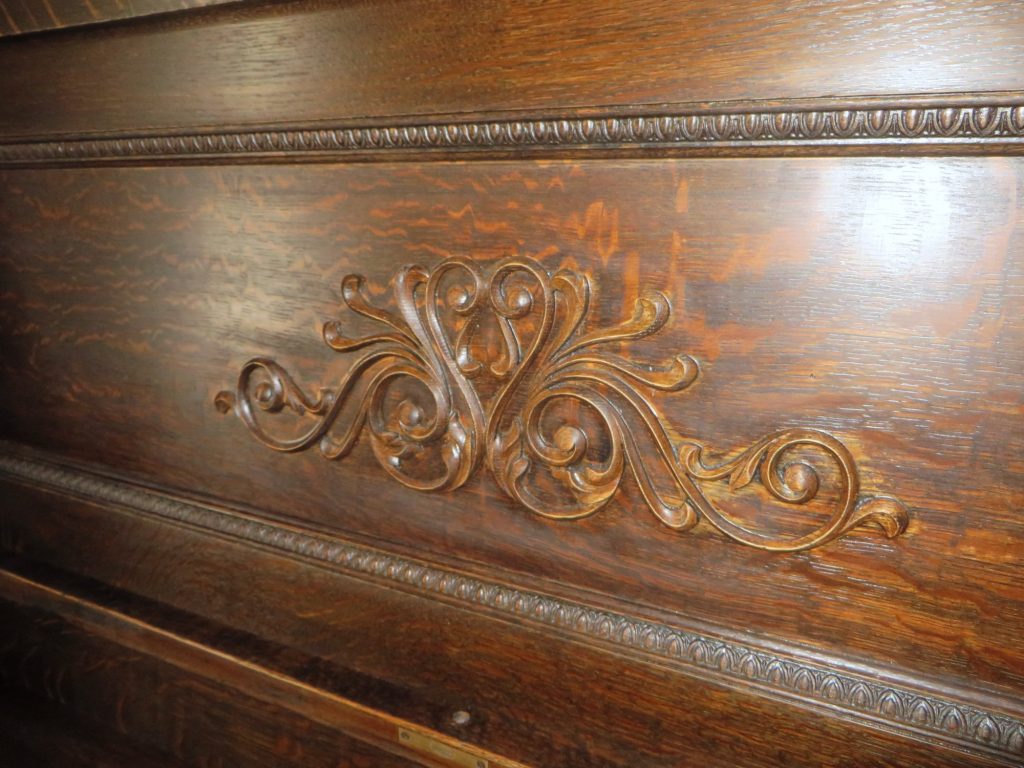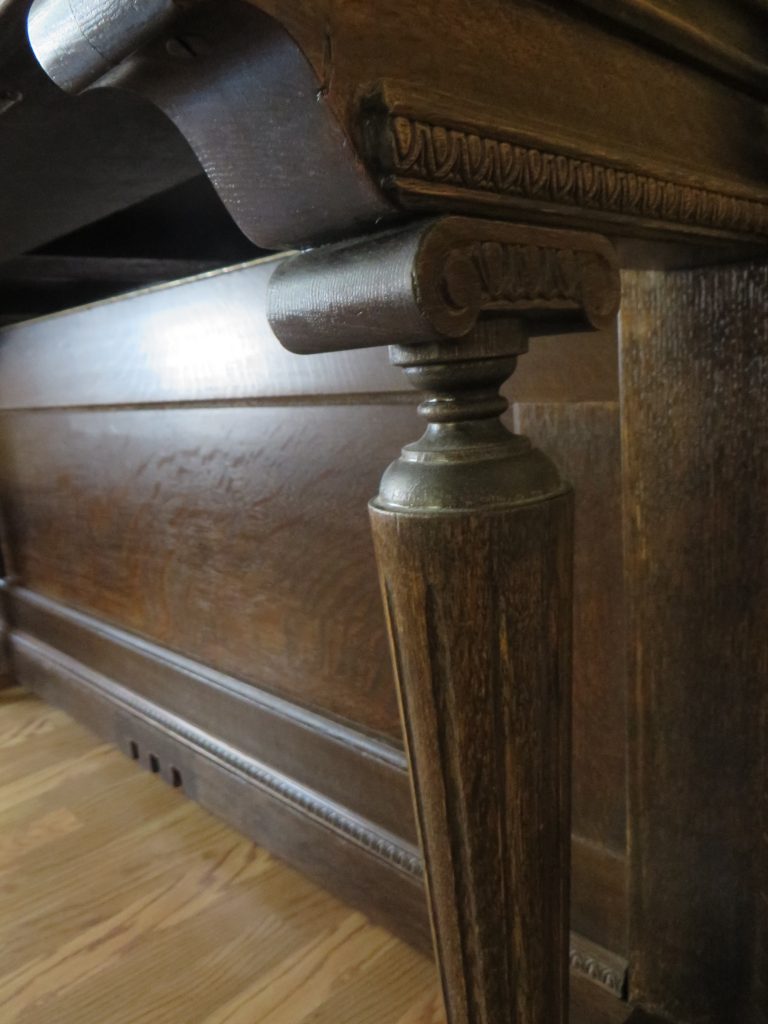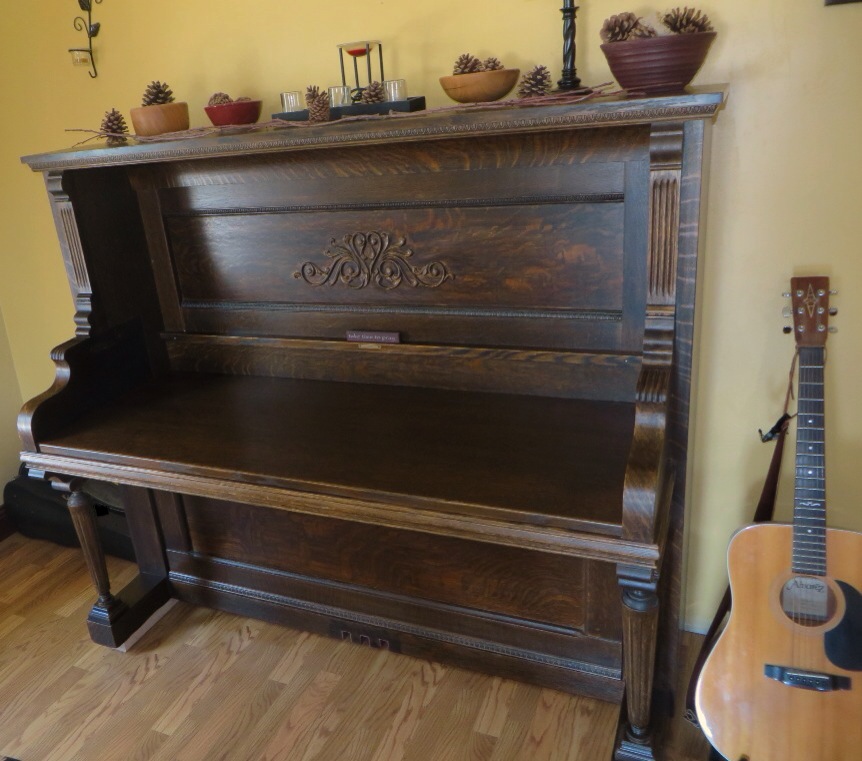To save a piano…
You might think that saving a piano means refinishing it. Or maybe fixing up the keys and having it tuned. Or maybe it means destroying it first…
Well, in this case, to save a piano, we had to destroy it first. What?!?
A couple summers ago we came home from vacation and immediately noticed a piano sitting on our neighbor’s back patio. Strange. It looked kind of pretty from a distance and Daddy went to take a closer look. “It’s beautiful. Needs refinishing but it’s beautiful.” Not really our business though so we let it go.
A couple hours later, I noticed with some horror that it looked like rain. All I could think of was that piano, sitting out in the weather. Daddy headed to the neighbor’s to ask what was going on with that piano. She said she had tried everyone and every place she could think of to try and get rid of it. A big upright piano can be a bit of a pain, as they are extremely heavy, and no one wanted it. She said, “How about you guys?” Problem is, we already own and play a big upright piano that has beautiful sound. “Well,” she said, “It’s going to the dump.”
To save a piano…
“We will take it!” Uh, to do what with? But we could.not. let it go to the dump. It was made from quartersawn white oak with a carved center detail and fluted side columns. The front support legs were also fluted. The finish was bubbled in a curious sort of way and the musical part of the piano was ruined, most likely from sitting in an unregulated environment, exposed to the extreme heat of summer and cold of winter.
So here the story gets a bit humorous…uh, a lot humorous! It happened to be the 4th of July weekend. We could not think of ANYONE that wasn’t busy with family gatherings or 4th of July celebrations or travels. And alas, the immediate rain threat had passed but we couldn’t just leave the piano sitting there. Even better…I was pregnant and couldn’t help move it like I normally would.
Enter REDNECK. We pulled the piano from 2 doors over, on a plywood sled, with our FOUR WHEELER!! Off the neighbor’s patio, down the alley, down into our yard, and up a slight incline to our patio. Somehow, Daddy pulled, pushed and strained to keep it from tipping over and up onto the cement patio. All while I stood by helplessly and watched (and drove the four wheeler!)
(you can see a bit of the finish bubbling on the side here.)
(See the cooler…proof we had just gotten home from vacation. And ignore the piles of bricks and rocks…landscaping projects in progress…)
Whew…finally we/he got it on the patio where he could start the even harder part.
To save a piano….
We did some researching online to get some ideas and ended up combining several to come up with the final design. The goal… a piano desk. But first he had to dismantle what had been a beautiful piece of craftsmanship, meant to make beautiful music. We had to destroy it first.
Pianos were never meant to be taken apart. They are built one direction, thus getting them back apart proved to be quite difficult. He began by removing easy things like the front panel (already removed for safekeeping in all the pictures as it had a beautiful carved detail), the top lid, and the strings. After that, things got decidedly more difficult.
The goal was to remove and reuse almost every piece of the piano. This meant he wanted to be very careful to remove the pieces in reusable condition, as well as not damage what they were attached to.
The piano lived for some time on our patio, carefully covered by a tarp. We tipped it up and down so many times and in order to help him out with the process, I probably tested the limits of how much push, pulling and lifting I should have been doing while pregnant.
The harp was the most difficult piece to remove. It is the super heavy cast iron piece that the strings run across and you can see it in the top right hand corner of the above pictures with some writing cast into it. The harp is what makes an upright piano (or any piano) super heavy. The wood is heavy but this harp probably weighed over 200 lbs.
When he finally got the piano GUTTED, ie: destroyed, it was time to make it into something beautiful (BTW, he found it incredibly difficult as a musician to destroy the musical aspect of the piano in spite of it being beyond repair.) He stripped the finish completely and refinished it a dark brown. He took a large piece of oak and made a desktop, matching the stain and finish to the older part of the piano for a seamless, ‘always been there’ look. Then through a process of trial and error and holding this piece here and that piece there, he began to put the piano back into a crafted piece of beauty.
He discarded the strings but kept the keys, the pegs, the pedal, the key covers, some of the inside parts and the harp. The harp is currently visual outdoor art in our yard 😉 but we have found great uses for most of the rest of the pieces that were not reinstalled on the piano. We kept one octave of keys and plan to make them into some wall art.
This piece is from the backside of the pedal (on the inside of the piano). The pedals themselves were mounted on a piece of wood removed from the inside of the piano and made into a candle holder. The pedal set up is one of the most ornate we have seen.
One half of the cover that folds down over the keys was used as a sort of crown molding just under the top of the piano desk. The other half we use on our wall as a shelf to hold our antique music book collection. Notice the molding detail along the bottom.
We don’t have an exact date on the piano, but early 1900’s is our best guess. In several places, we found the number 1800 stamped, so we saved one of those pieces as well. Daddy thinks it is a model number or something of the sort.
The piano has a storage compartment underneath, and under-cabinet lighting hidden above the desk top. Some feet and a few other little details remain to be finished but it makes a wonderful desk. It turned out so beautifully…how could we have let it be junked! That’s just it…we couldn’t.
And that is how we …. saved a piano!

